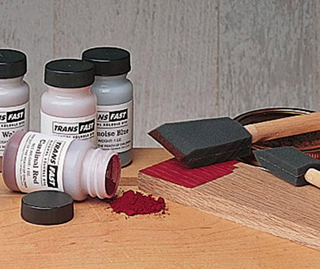
My brother gave me a piece of new pine and a piece of what looks like old pine that one of his dogs chewed on from his antique fireplace surround. He’s asked me if I can match the stain color. Where do I start? Do I buy $1,000 worth of stain and try every can? I’m thinking instead of stain I’ll try dye but not sure why or if I should. Any guidance you can offer would be appreciated. Thanks – Paul Yanney
Chris Marshall: Glad you are already bracing for the fact that this is going to be a finicky trial-and-error process. Just a thought, but is there another piece on the surround that matches the one you need to replace but isn’t in a conspicuous place? More than likely, there’s going to be a little bit of a mismatch between your new piece and the old wood, so ideally it would be good to put the new piece where it’s less likely to be seen and use an original piece where it’s needed more. In other words, borrow from Peter to pay Paul. If that isn’t an option, it’s time to start experimenting. One advantage to aniline dye powder or liquid is that you can mix it with other dyes to get an almost infinite range of color variations. You can buy sets of dyes in primary colors, and that might get you close to a match, but keep in mind, you have a huge color spectrum to narrow down. Dyes will offer more flexibility for color matching than the more limited range of pre-mixed oil stains. But that said, the topcoat of finish (varnish or shellac) can also impact the color of the wood — it is another variable you’ll have to contend with. You may want to talk with a professional refinisher who has the expertise and experience to do this job correctly from the start. It could save time and frustration. And I’ll be willing to bet it won’t cost anywhere near $1000 worth of stain.





